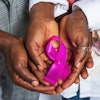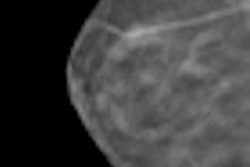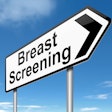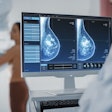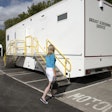More than half of women between the ages of 40 and 49 who are diagnosed with breast cancer on screening mammography report no family history of the disease, according to a study presented on Thursday at the American Roentgen Ray Society (ARRS) annual meeting.
Researchers who are critical of starting breast screening at age 40 have suggested that mammography in younger women is appropriate only for those who are at high risk for cancer, such as women with a family history of the disease. This position received backing when the U.S. Preventive Services Task Force (USPSTF) in 2009 withdrew its recommendation that women ages 40 to 49 be screened, instead recommending that they consult with their physicians.
But the new findings presented at ARRS this week reinforce the importance of screening mammography in this age group -- even if these women do not have a relative with a history of breast cancer, said researchers from Elizabeth Wende Breast Care in Rochester, NY.
"Our study is a direct response to the 2009 USPSTF guidelines, as well as studies that have been published since that claim that screening doesn't make a difference," lead author Dr. Stamatia Destounis told AuntMinnie.com.
Destounis' team identified 6,154 cancers diagnosed between 2000 and 2010 at Elizabeth Wende in both diagnostic and screening patients. The researchers found 1,116 cancers (18%) in patients between the ages of 40 and 49. Of these 1,116 cancers, 373 (33.4%) were diagnosed from the screening population.
More than half of cancers diagnosed from the study screening population were found in women with no family history, Destounis said. The average patient age at presentation was 45 years.
"There were 228 women diagnosed with cancer who had no family history," she told AuntMinnie.com. "That's 61% of the 373 cancers we found."
Seventeen women were excluded from this cohort due to personal history of breast cancer, leaving 211 cases for evaluation. Of these, 79 were masses, 90 were calcifications, 17 were architectural distortions, 16 were masses with calcium, and nine were asymmetries. Destounis' team diagnosed invasive disease in 136 (64%) of the 211 cases, and 35 (26%) of these invasive cases had positive lymph nodes.
One hundred fifty-one women opted for lumpectomy, 20 of whom proceeded to mastectomy after the initial lumpectomy revealed residual disease or close borders. Fifty-nine opted for mastectomy; one patient did not have surgery due to metastatic disease, Destounis said.
"[Breast imagers] get a lot of criticism about overdiagnosis and overtreatment," she told AuntMinnie.com. "But in our review, we found that in the subset of women with no family history and a diagnosis of invasive cancer, more than 26% had cancerous lymph nodes in their axilla. This is cancer that needs to be identified, not something that's going to go away."
Rock and a hard place
There will always be controversy over screening mammography, according to Destounis. But the bottom line is that a radiologist's job is to help find cancer early.
"As breast imagers, we're stuck between a rock and a hard place," she told AuntMinnie.com. "Our role is to investigate new technology that can help find cancer earlier, bring it in, and embrace it if it's helpful, even if we get criticized for overdiagnosing. Since we have no way to identify which cancer is going to hurt the patient and which cancer won't, we have to work up all abnormalities we find on screening mammography."
The study data reaffirm the need to continue offering yearly screening mammography to younger women, according to Destounis.
"There are a significant number of breast cancers detected in this age group, and annual screening for women in their 40s makes a difference," Destounis said.

